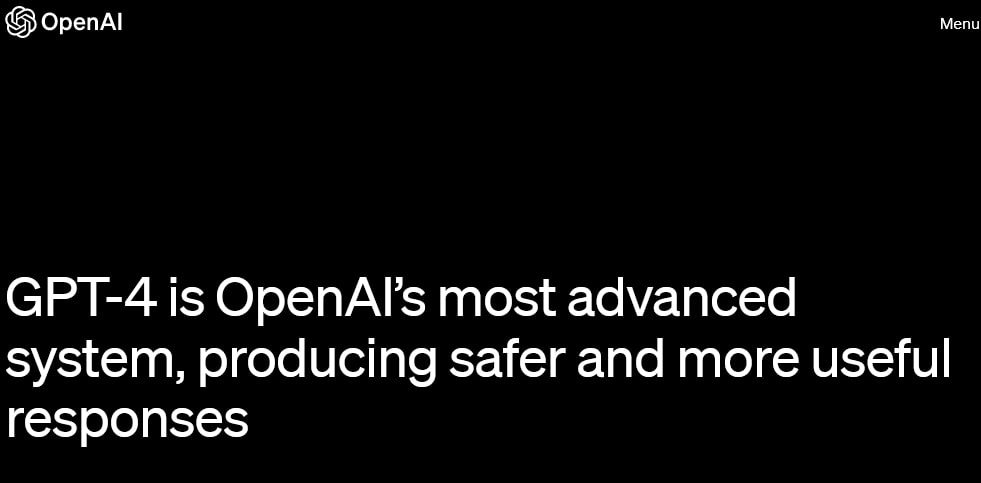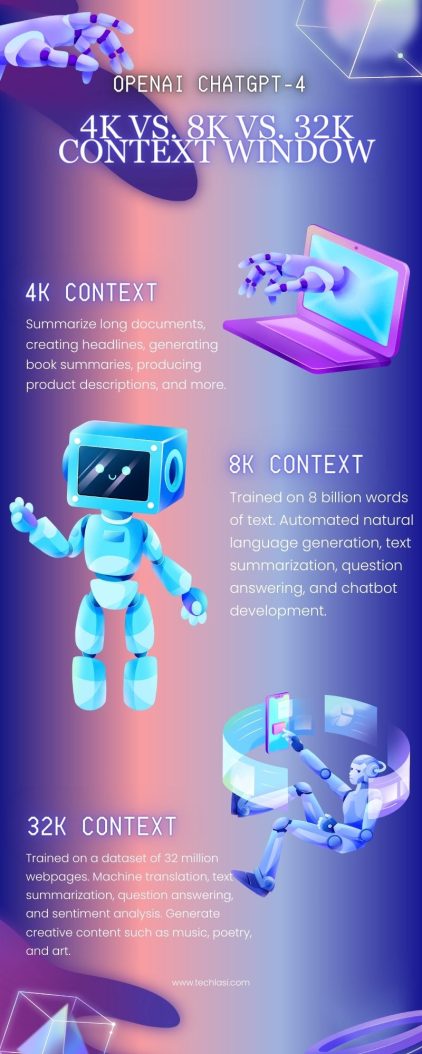Key Takeaways:
- GPT-4 pricing is based on context window size – the amount of text used to generate responses. Larger windows cost more but allow more detailed responses.
- Context windows come in 3 sizes: 4K (cheapest), 8K, and 32K (most expensive).
- 4K context windows are best for simple use cases where context isn’t critical.
- 8K context windows provide a balance of cost and performance for many use cases where context matters.
- 32K context windows enable very detailed responses by providing the most context, but at the highest cost.
- Consider your specific use case and choose the smallest context window that meets your needs to optimize cost. Larger windows enable more complex conversations.
The latest version of OpenAI’s generative language model, promises to take AI to the next level. However, with the release of GPT-4 comes a new pricing model based on context windows. In this guide, we’ll explore what context windows are, how they affect pricing, and what you need to know to make informed decisions about using GPT-4.

What are Context Windows?
Context windows are a key component of chatGPT-4’s pricing model. A context window is the amount of text that the model uses to generate a response. For example, if you’re using GPT-4 to generate responses to customer service inquiries, the context window could be the text of the customer’s inquiry itself, or it could be a larger portion of the conversation that’s taken place so far.

How do Context Windows Affect Pricing?
The larger the context window, the more information GPT-4 has to work with to generate a response. However, larger context windows also require more computational power, which makes them more expensive. GPT-4 offers three different context window sizes: 4K, 8K, and 32K.
What is 8k and 32k context?
The 8k and 32k contexts refer to the maximum number of tokens available for the context in the ChatGPT-4 model. The 8k context offers 8,000 tokens, allowing you to provide a prompt and receive a completion with a combined maximum length of 8,000 tokens. Similarly, the 32k context provides an extended context length of 32,000 tokens. With the 32k context, you have more room to input longer prompts and receive correspondingly longer completions. In essence, the context length determines the amount of information that can be considered by the ChatGPT-4 model, enabling more extensive and detailed conversations or responses.
| Model | Context Length |
|---|---|
| GPT-4 4k | 4,000 tokens |
| GPT-4 8k | 8,000 tokens |
| GPT-4 32k | 32,000 tokens |
4K Context Window Pricing
The 4K context window is the smallest and least expensive option. It’s also known as GPT-3.5. The 4K context window costs $0.02 per 1K tokens for davinci-003, and $0.002 per 1K tokens for gpt-3.5-turbo.
8K Context Window Pricing
The 8K context window is about 13 pages of text and is more expensive than the 4K window. It will cost $0.03 per 1K prompt tokens, and $0.06 per 1K completion tokens.
32K Context Window Pricing
The 32K context window is about 52 pages of text and is the largest and most expensive option. It will cost $0.06 per 1K prompt tokens, and $0.12 per 1K tokens.
8k Context vs 32k Context
Let’s examine the impact of 8k and 32k contexts in unleashing the potential of GPT-4.
| Context Length | Description | Number of Tokens | Approximate Text Length | Pricing (Per 1K Tokens) for Prompt | Pricing (Per 1K Tokens) for Completion |
|---|---|---|---|---|---|
| 8k | Offers 8,000 tokens for the context | 8,000 | About 13 pages of text | $0.03 | $0.06 |
| 32k | Provides an extended 32,000 token context | 32,000 | About 52 pages of text | $0.06 | $0.12 |
Also Read:
- How to Write 1000 Blog Posts in 30 Minutes Using ChatGPT-4
- How to Generate Business Leads Using ChatGPT-4
- The Ultimate Guide to Llama 2: How to Access, Download, and More
What is the Right Context Window for Your Needs
Choosing the right context window for your needs requires careful consideration. The larger the context window, the more information GPT-4 has to work with, but also the more expensive it will be. Consider your use case carefully and choose the context window that will give you the best balance of cost and performance.
Use Cases for 4K Context Windows
4K context windows are best suited for use cases where context isn’t particularly important, or where the response can be generated quickly. For example, if you’re using GPT-4 to generate product descriptions for an e-commerce website, the 4K context window may be sufficient.
Use Cases for 8K Context Windows
8K context windows are best suited for use cases where context is important, but where the response doesn’t need to be as comprehensive. For example, if you’re using GPT-4 to generate responses to customer service inquiries, the 8K context window may be sufficient.
Use Cases for 32K Context Windows
32K context windows are best suited for use cases where context is critical and where the response needs to be as comprehensive as possible. For example, if you’re using GPT-4 to generate legal documents or medical reports, the 32K context window may be necessary.
Conclusion
In conclusion, GPT-4 is an advanced language model that has the ability to process larger amounts of data compared to its predecessor, GPT-3. The pricing model for GPT-4 is based on the context window size, with the larger context windows costing more than the smaller ones. The 8K and 32K context windows are the latest versions of GPT-4, while the 4K context window is considered as GPT-3.5.
FAQs:
Can I use GPT-4 for free?
No, GPT-4 is a paid service and the cost depends on the context window size chosen.
What is the difference between GPT-3 and GPT-4?
GPT-4 has a larger context window size and can process more data compared to GPT-3.
Which context window size is best for me?
The context window size that is best for you depends on your specific needs and the complexity of the language processing tasks you wish to perform.
How can I purchase a GPT-4 subscription?
You can purchase a GPT-4 subscription through the OpenAI website.
Are there any limitations to using GPT-4?
GPT-4’s performance may be limited by the quality of the input data and the complexity of the language processing tasks required.
Can I switch between different context lengths during a conversation?
While you cannot switch context lengths within a single conversation turn, you can start a new conversation or session with a different context length if desired.
- Top 10 AI Image Generators Without Censorship 2025 - July 2, 2025
- How Shopping Habits Transform with AI in 2025 - June 29, 2025
- Your Organization’s Data Cannot Be Pasted Here: Complete Solutions Guide for 2025 - June 24, 2025
